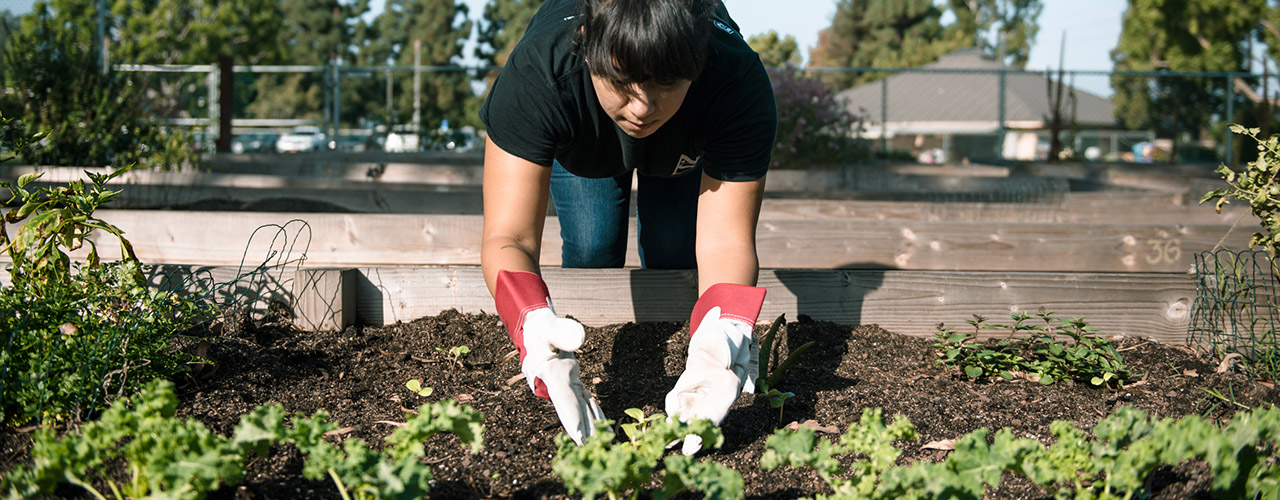
Feeding a Need
Imagine a person without a permanent place to live, someone who doesn’t know where they will sleep or where their next meal will come from. They are anxious, tired, stressed and hungry.
Chances are the person you have visualized doesn’t look like a college student. But they are. These students usually are smart, driven and dedicated but lack the fiscal resources to make ends meet and often become what is referred to as food or housing insecure.
“Part of the problem with people not knowing that this issue exists is that people have generally had a stereotype about what homelessness or food security looks like,” said Dr. Rashida Crutchfield, an assistant professor in the Social Work department.
Crutchfield’s research has shown than one in 10 students in the CSU system is homeless, and one in five does not have steady food access.
“We have students on our campus who are skipping meals … going days or longer without eating because they don’t have the income to meet those needs,” Crutchfield said. “The other side of the coin is students who have housing instability and are moving from place to place every night. These constant instabilities generate a lot of barriers to the educational process.”

Crutchfield is a principal investigator for the California State University Study of Basic Needs, a research initiative designed to shed light on how CSU campuses are meeting the needs of housing and food-insecure students and making informed changes to help ensure these students succeed and graduate.
The Basic Needs research has already put new and improved programs into motion, including the Student Emergency Intervention and Wellness Program that works to identify and immediately serve at-risk students experiencing crisis. The program is an institution-wide collaborative endeavor to provide meals, short-term housing, counseling and emergency funds for unexpected expenses – all issues that could delay a student’s academic progress or affect his or her health and wellness.
“Cal State Long Beach is a great example of folks who heard about the problem and moved quickly to institute programmatic responses,” Crutchfield said of the collaborative effort involving campus leadership, faculty research and curriculum, community partnerships and systemwide coordination.
“We’re also focusing on process improvements, such as facilitating student enrollments into CalFresh (federally known as the Supplemental Nutrition Assistance Program or SNAP), and following a trauma-informed care approach so that a student experiencing food or housing insecurity only needs to tell their story once to access services.”

Another notable change is the university’s expanded Beach Pantry, which offers non-perishable items, such as canned soups, vegetables and fruits, as well as proteins such as tuna and peanut butter. The pantry, which officially opened October 2016, is available to all students but aimed toward supporting those with food insecurity issues. The goal is to introduce fresh foods to the program later this year.
The Beach Pantry is one area where Associate Professor Dr. Libby Gustin of the Family and Consumer Sciences department is putting her knowledge of sustainable food systems to work. While Crutchfield’s research centers around services to assist students in finding regular, fixed housing or consistent access to food, Gustin is passionate about helping others make healthy food choices within their financial means. She takes it a step further by teaching simple, effective techniques for meal preparation.
“There is a general lack of awareness about what nutritious food is, how to access it, and what to do with it once you have it. I’m trying to change that,” said Gustin, who teaches Hospitality Management in the College of Health and Human Services. “One of the programs I helped start on campus is the ‘Grow Beach’ garden where my students learn to grow food in a sustainable environment and then distribute it to the Beach Pantry or other worthwhile organizations serving those in need.”
Using the “Four Pillars of Food Security” (see illustration) developed by the World Health Organization as a guiding principle, Gustin’s research is focused on the development of an intervention tool to address barriers to food security. She recorded 11 episodes of a television cooking show called “Libby’s Sustainable Kitchen” and piloted the program to three different groups, including students, local senior citizens, and at-risk or homeless individuals served by the Villages at Cabrillo, Long Beach, a renovated former Naval housing site that offers supportive services to the homeless.

“What I found to be consistent across all three groups was their willingness to learn new skills, but the support needed in each group was very different,” Gustin said. “The homeless group needed a lot of hands-on help. Students wanted to learn how to incorporate a healthier, yet convenient, approach into their busy schedules, and the seniors asked for a lot of reference material.”
Gustin’s hope is to prepare a curriculum appropriate for any community, across any socio-economic level, anywhere in the United States that provides the skills necessary to access and utilize nutritious food.
“I think the most important thing is for people to really understand how and what they eat impacts everything in their life,” Gustin said. “When you’re eating foods that are processed, full of toxins and devoid of nutrients – you’re only going to accomplish so much in your life because you’re not giving your brain or your body the fuel it needs to thrive. I’m excited to be a part of this mind shift at Cal State Long Beach and beyond.”